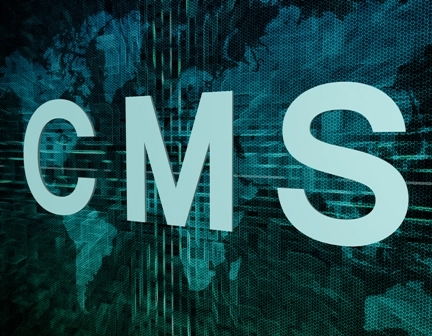Part B Insider (Multispecialty) Coding Alert
What's On the RAC Hot List? E/M Codes Billed With Procedures

Review guidance on modifiers 24, 25, and 57 before you submit your claims. The popularity of appending modifier 25 can't be denied. It allows you to collect for both an E/M visit and a procedure; however, that doesn't mean it's always appropriate. One recovery audit contractor (RAC) recently identified E/M codes billed with procedures thathave 10- and 90-day global periods as audit areas, which means that auditors will be seeking claims reported this way and contacting practices that billed these services incorrectly. Problem: Performant Recovery announced in January that it will be homing in on claims that violated CMS guidelines for these services. The RAC identified these as two separate audit issues, as follows: 3 Questions Show the Appropriate Use of Modifiers Consider the following example, and then answer the three key questions below to ensure that you know how to code the above-referenced modifiers properly and to prevent your practice from landing on the RAC's radar screen. Example: A doctor saw a patient for an E/M service, diagnosed the patient with a detached retina, and decided to perform a repair that same day, which he codes using 67107 (Repair of retinal detachment; scleral buckling (such as lamellar scleral dissection, imbrication or encircling procedure), including, when performed, implant, cryotherapy, photocoagulation, and drainage of subretinal fluid). What is the best modifier that you can attach to the E/M service? Question 1: Does the E/M Follow Another Service? Answer: No. In this situation, the E/M service happens prior to the surgery. Therefore, you would not choose modifier 24 (Unrelated evaluation and management service by the same physician or other qualified health care professional during a postoperative period). Reason: When an E/M service occurs during a postoperative global period for reasons unrelated to the original procedure, you should append modifier 24 to the appropriate E/M code. Modifier 24 tells the payer that the surgeon is seeing the patient for a new problem. Therefore, the plan should not include the E/M service in the previous procedure's global surgical package. Rule: You cannot bill separately for E/M-related services during the global period. The global surgical package includes routine postoperative care during the global period. Question 2: Was It a "Major" or "Minor" Procedure? Answer: Major. Because the retinal repair was a major service, then you should strike off modifier 25 (Significant, separately identifiable evaluation and management service by the same physician or other qualified health care professional on the same day of the procedure or other service) as an option. Rationale: If the surgeon provides a significant, separately identifiable E/M service on the same date as a minor procedure, including those with zero-day, 10-day, or "XXX" global periods, you should append modifier 25 to the E/M code. Question 3: Was the E/M Related to the Major Surgery? Answer: Yes. In the scenario above, the retinal repair is "major" with a 90-day global period, and "related" to the E/M service the physician performs the day of or the day prior to the surgery. Therefore, you should append modifier 57 (Decision for surgery) to your E/M service (such as 99214, Office or other outpatient visit...) to indicate that this E/M service led to the decision for surgery. Caution: Failure to append modifier 57 to the E/M code will result in the payer bundling the E/M service into the global surgical package, leading to a loss in reimbursement. Without the modifier, the visit will appear to be the preoperative visit that the global surgical package includes. What If You Do Get a Letter from Your RAC About this? An audit letter may be an unwelcome sight, but it should never be a cause for extreme stress. The letter should spell out exactly 1) which records the payer needs, and 2) the deadline by which you should have those records ready to be audited. It's your responsibility to read all audit letters thoroughly and to respond as soon as possible. This is especially vital when the auditor is looking for a reimbursement of over-coded or over-billed money. "If you don't respond by the deadline, you're going to be considered to agree with their charge, and you'll owe the money back," advises Barbara J. Cobuzzi, MBA, CPC, CENTC, COC, CPC-P, CPC-I, CPCO, vice president at Stark Coding & Consulting, LLC, in Shrewsbury, N.J. Respond with evidence: The letter can also offer you a golden opportunity to avoid the audit entirely. You can appeal the claim, provide all the supporting documents to make your case, and make an in-person visit from the auditors unnecessary. The better you build your case through explanations and evidence, the less time you'll spend across the table from scary auditors. This process can be a very effective way of dealing with audits by RACs. "They base their audits entirely on computer modeling," Cobuzzi explains. "So don't just automatically accept what they say!" Resource: To read Performant's audit issues, visit https://performantrac.com/audit-regions/region-1/?order=desc&filter=date_approved.
Related Articles
Part B Insider (Multispecialty) Coding Alert
- Targeted Probe And Educate:
Use These 5 Tips to Master Part B Claims Reviews
Be on top of your MAC's TPE guidance as the program evolves in 2018. CMS's [...] - Compliance:
What's On the RAC Hot List? E/M Codes Billed With Procedures
Review guidance on modifiers 24, 25, and 57 before you submit your claims. The popularity [...] - Part B Reimbursement:
Deadline Alert: Submit Your 2017 QPP Measures with New CMS Tool
Hint: It's crunch time - get your 4 percent bump before it's too late. Due [...] - Part B Coding Coach:
Know the Differences for Complex Repair, Adjacent Tissue Transfer Coding
Tip: Look beyond the CPT® rules to avoid denials. CPT® code guidance is great, but [...] - Physician Notes:
Fraud and Upcoding Net MD 13 Years in Prison, Millions in Returns
The feds are on the lookout for outlier activity. Some believe they can buck the [...]




